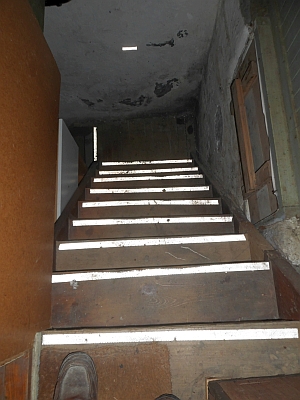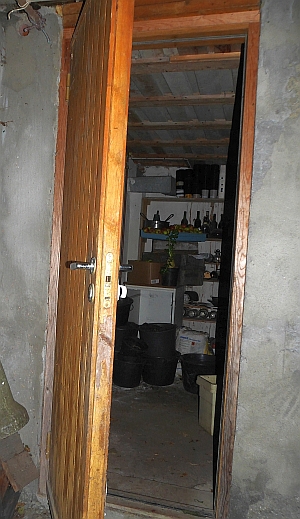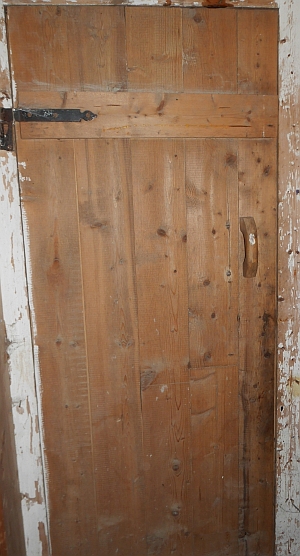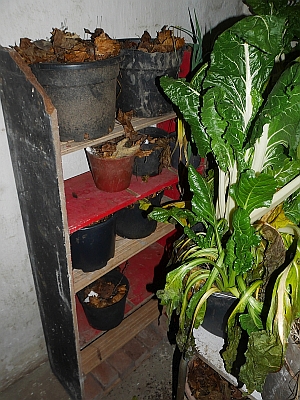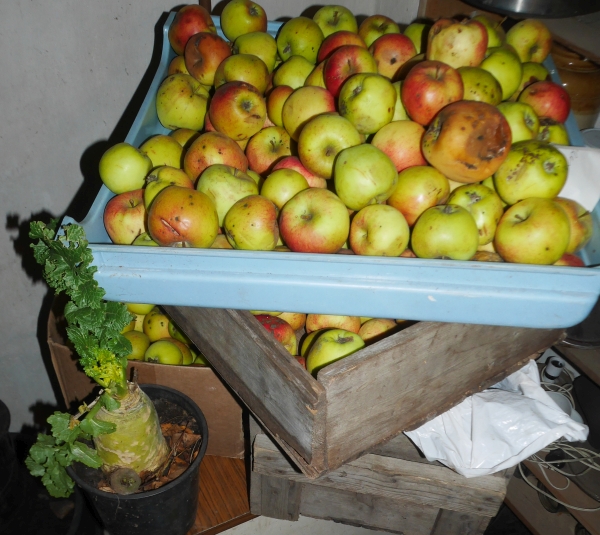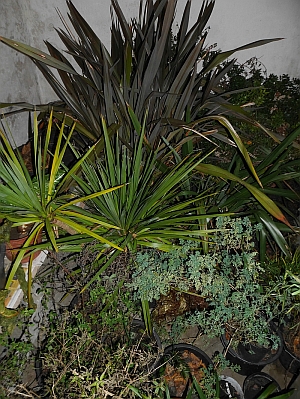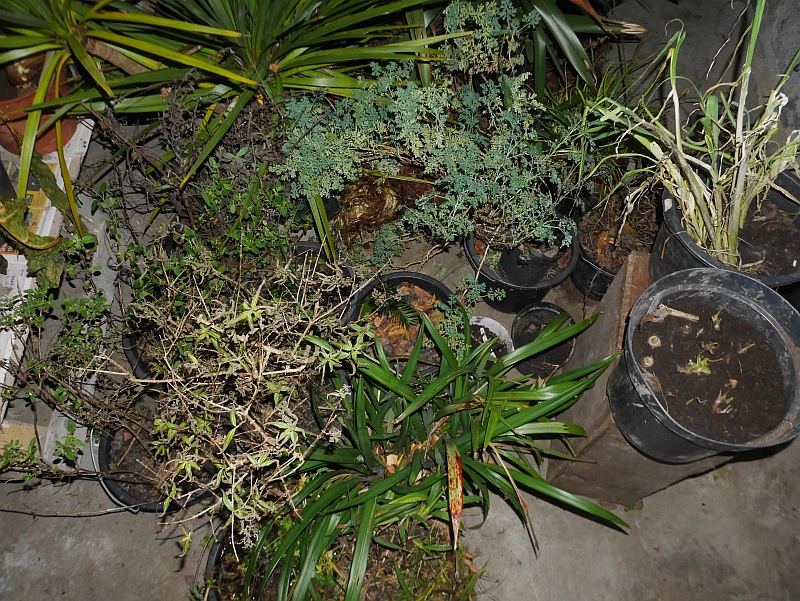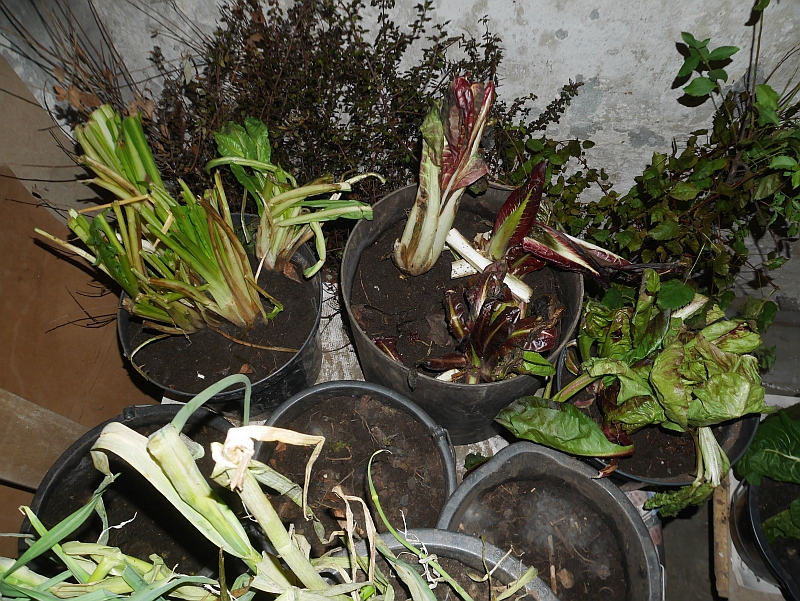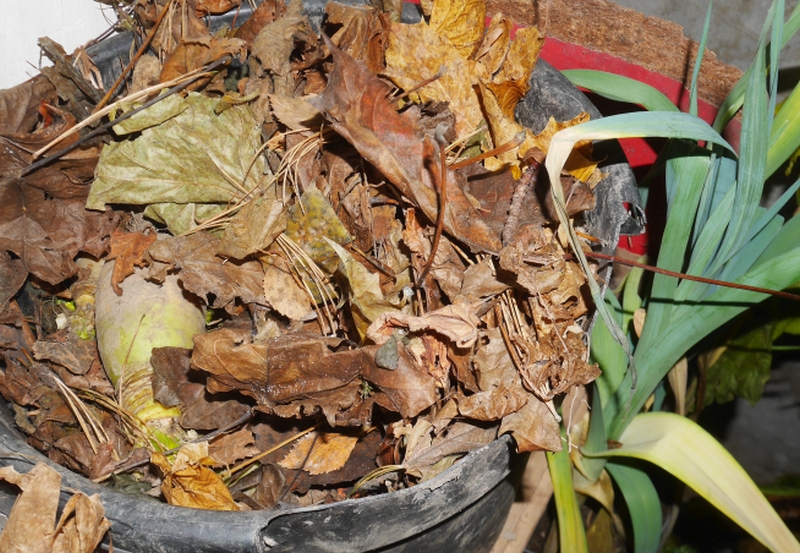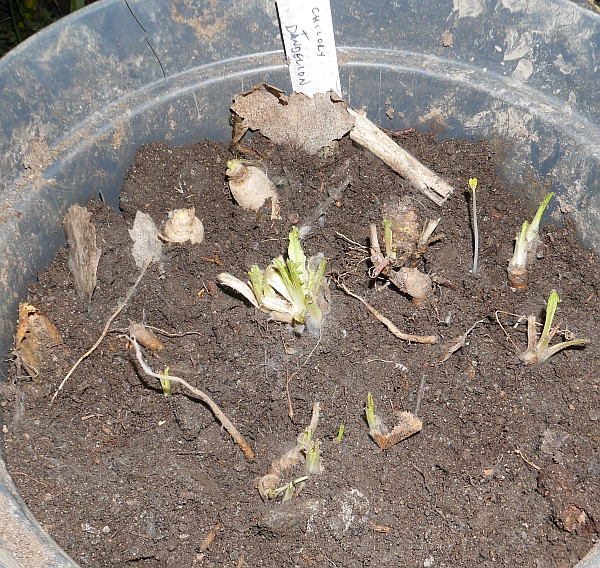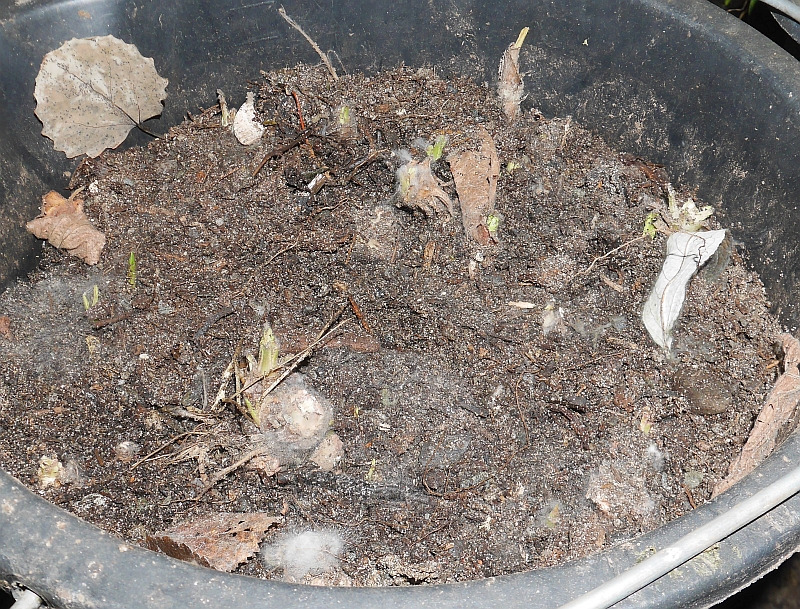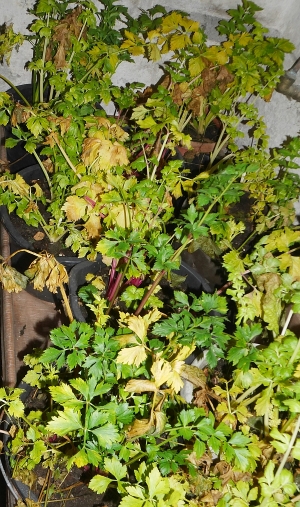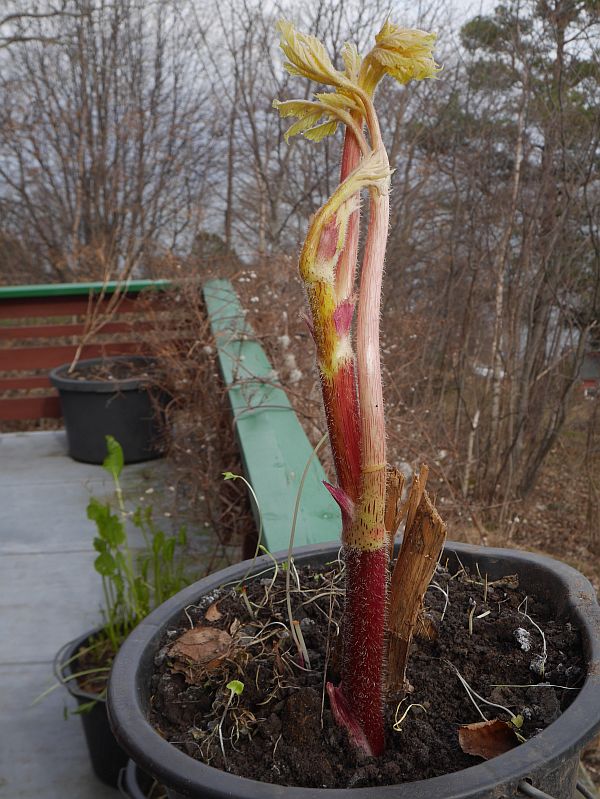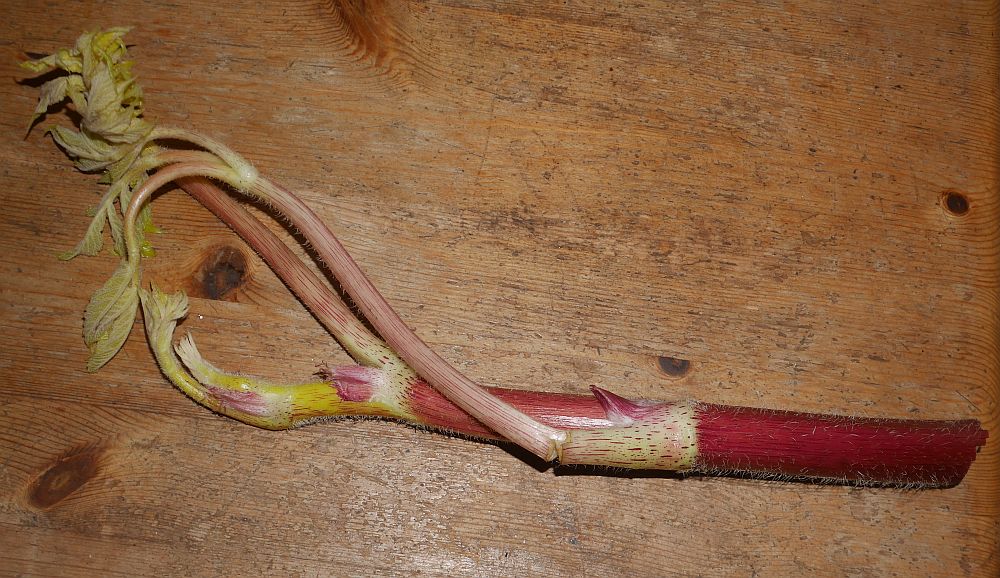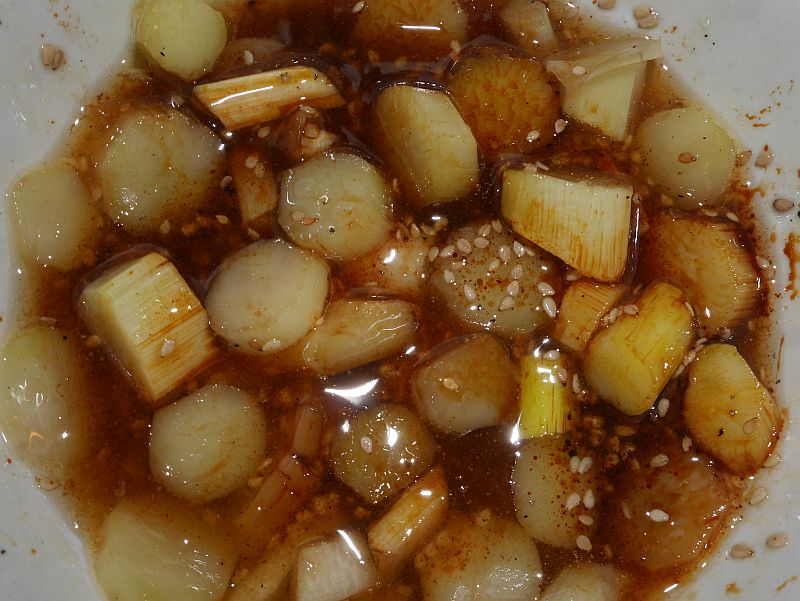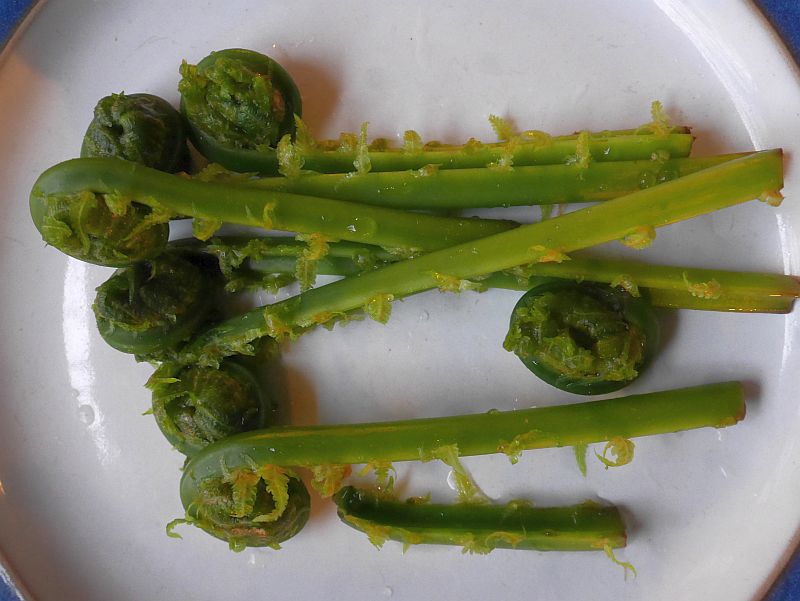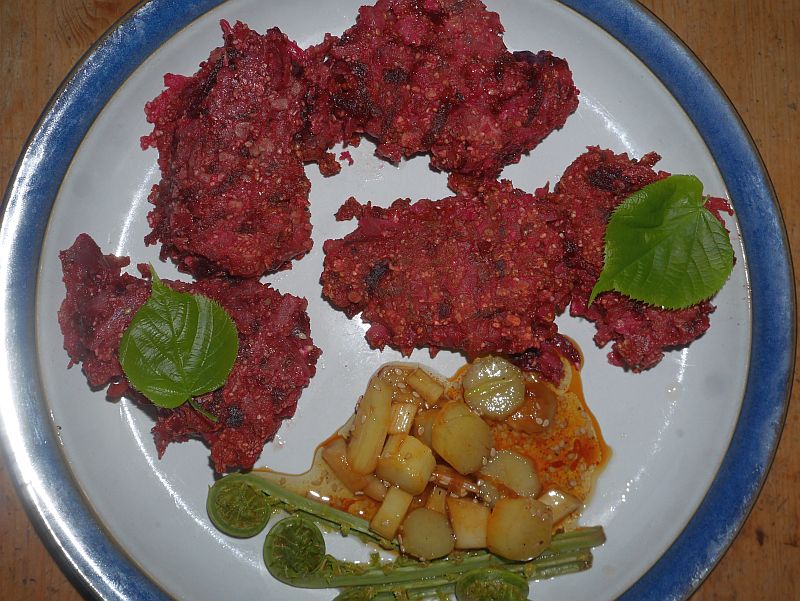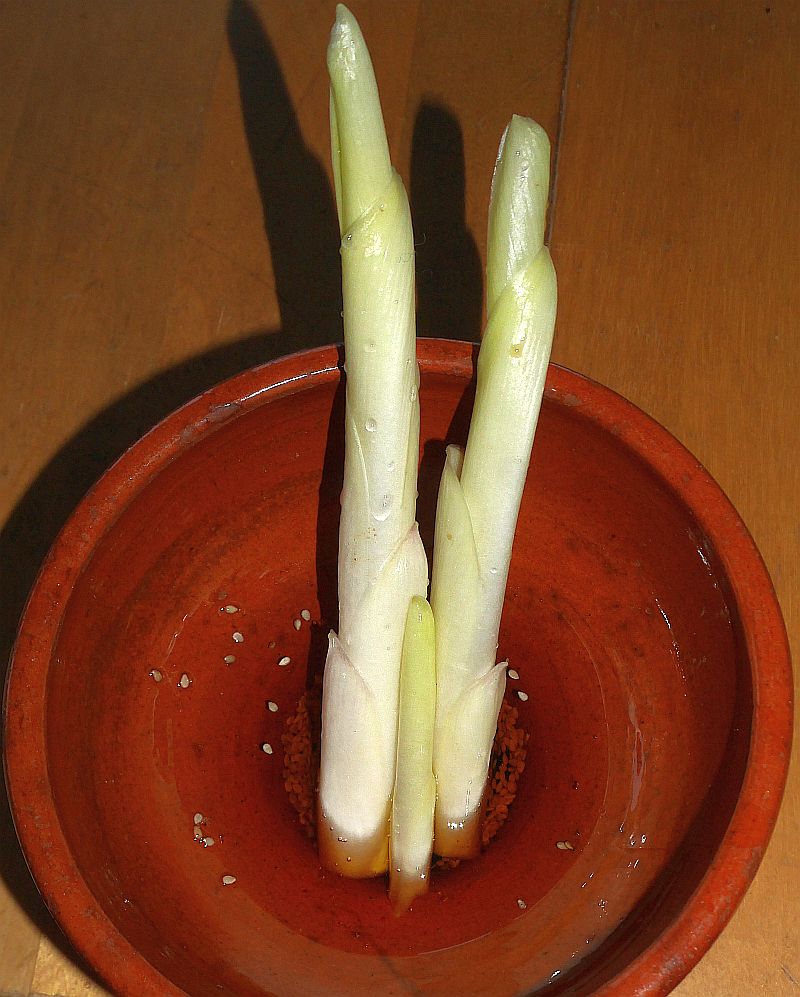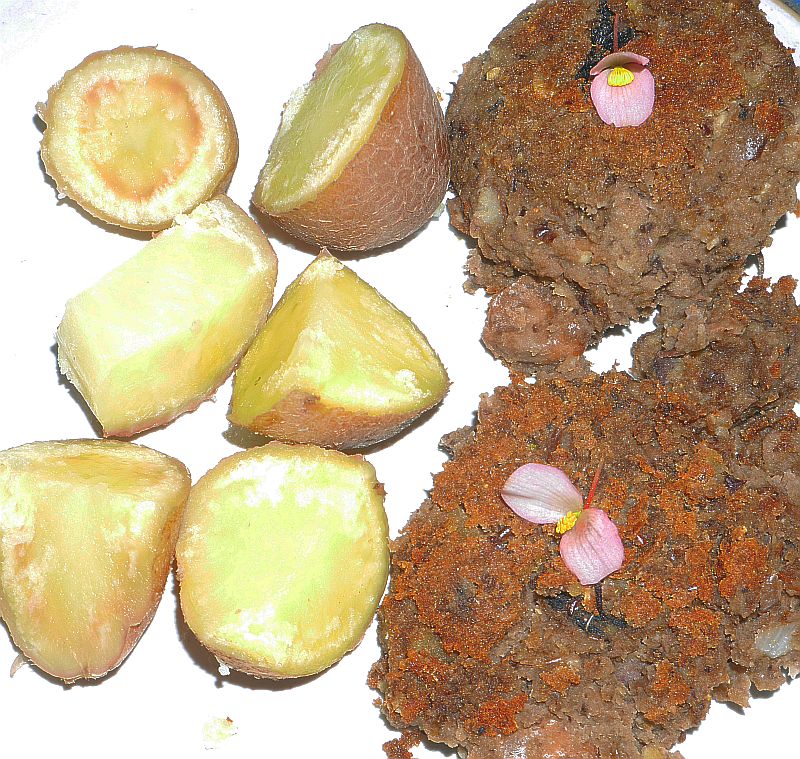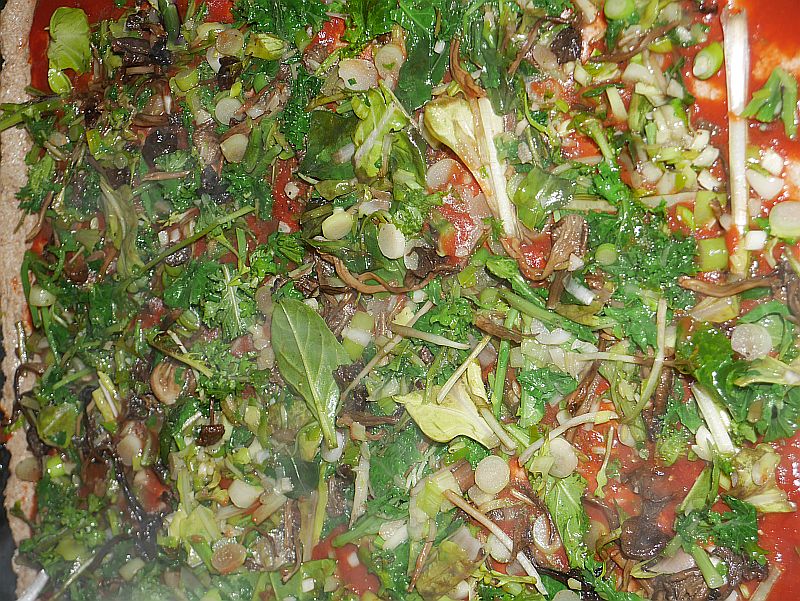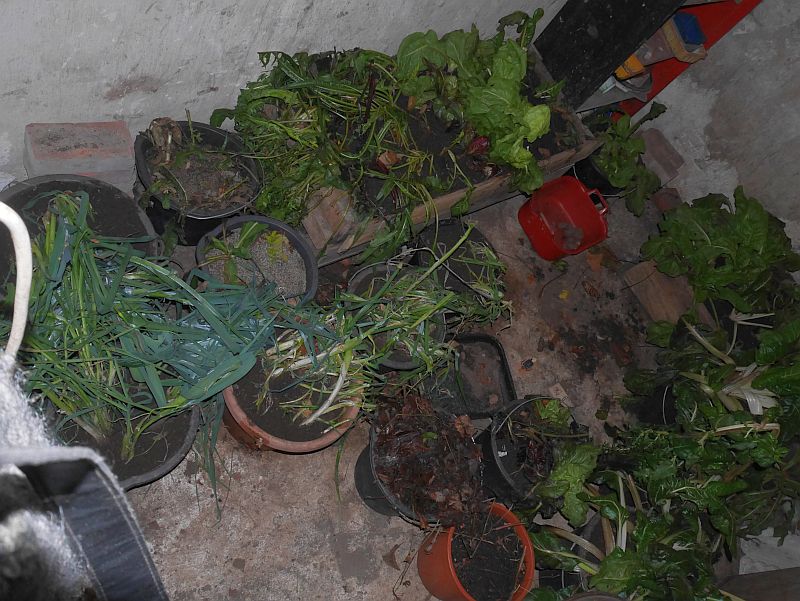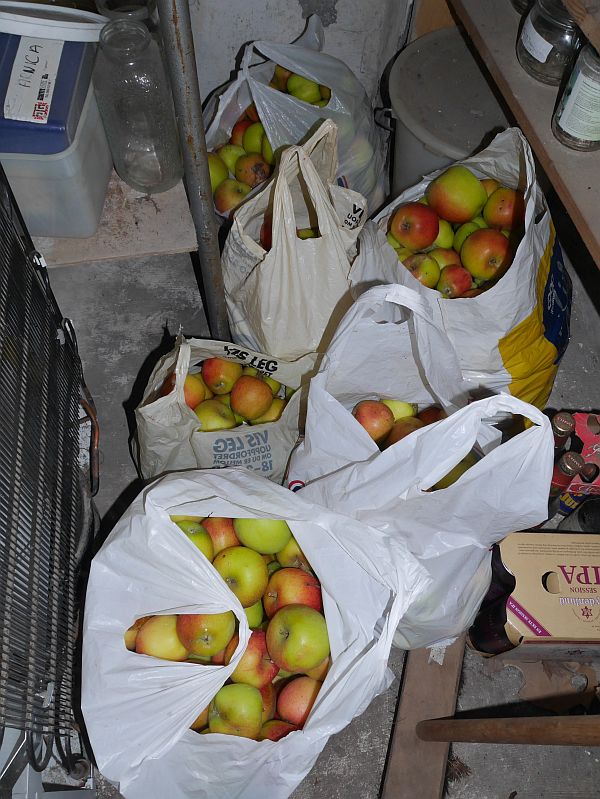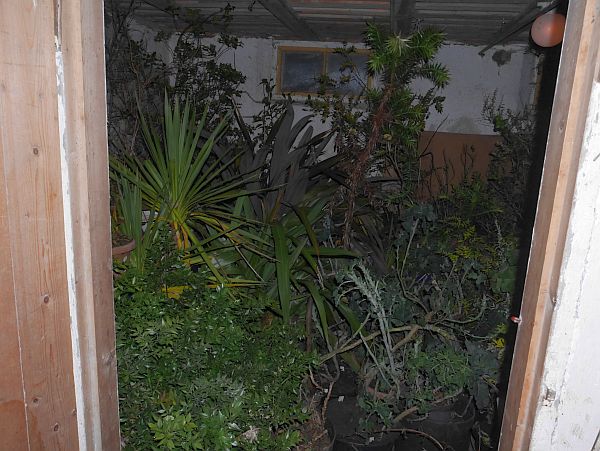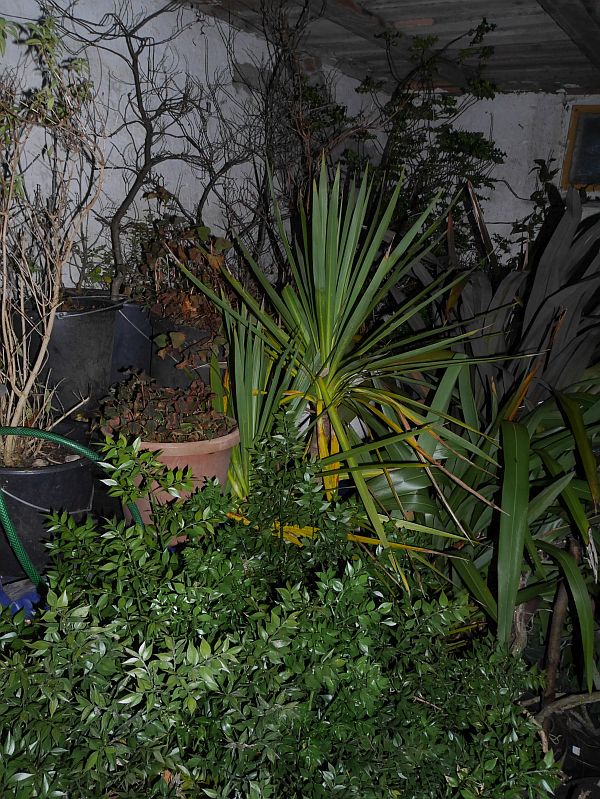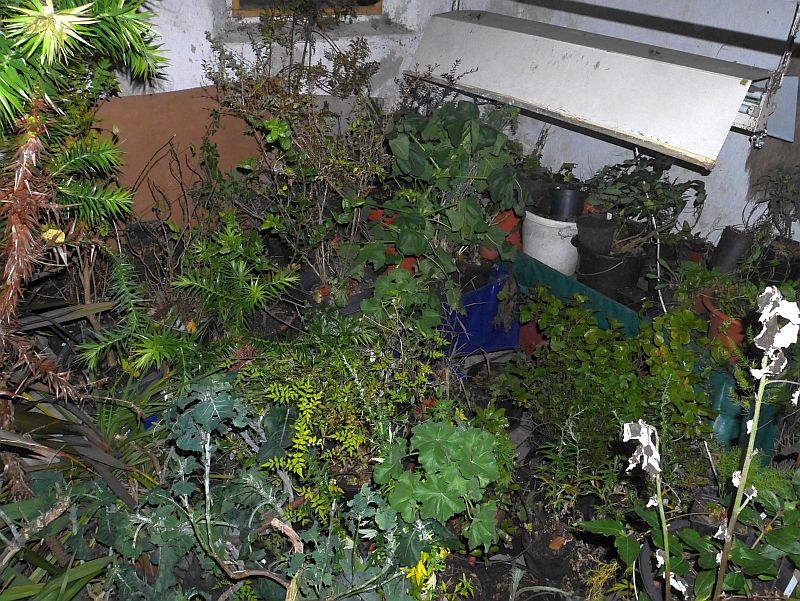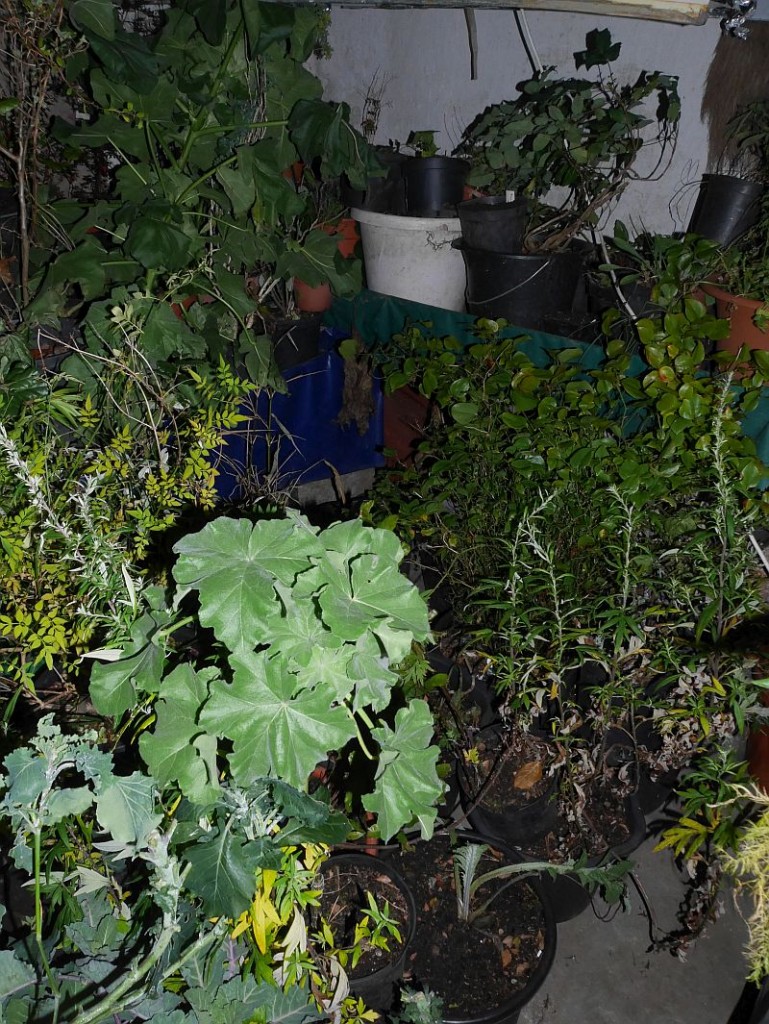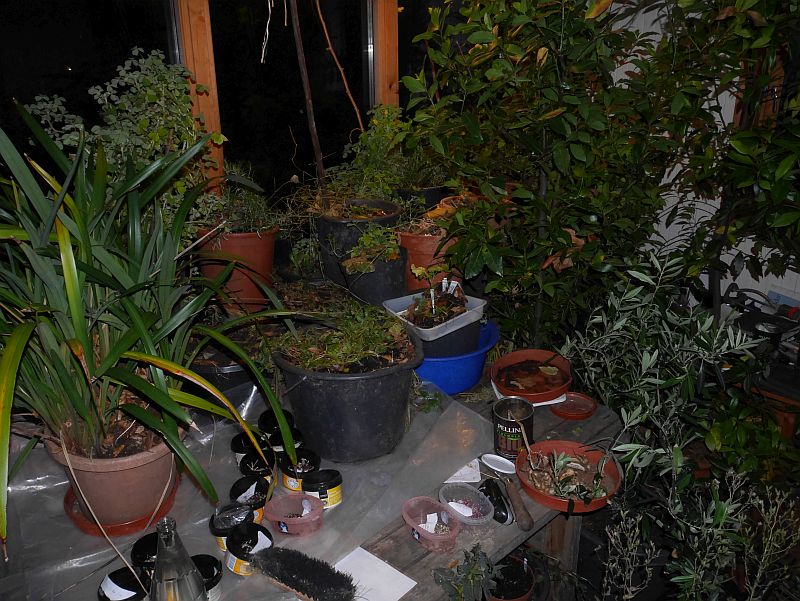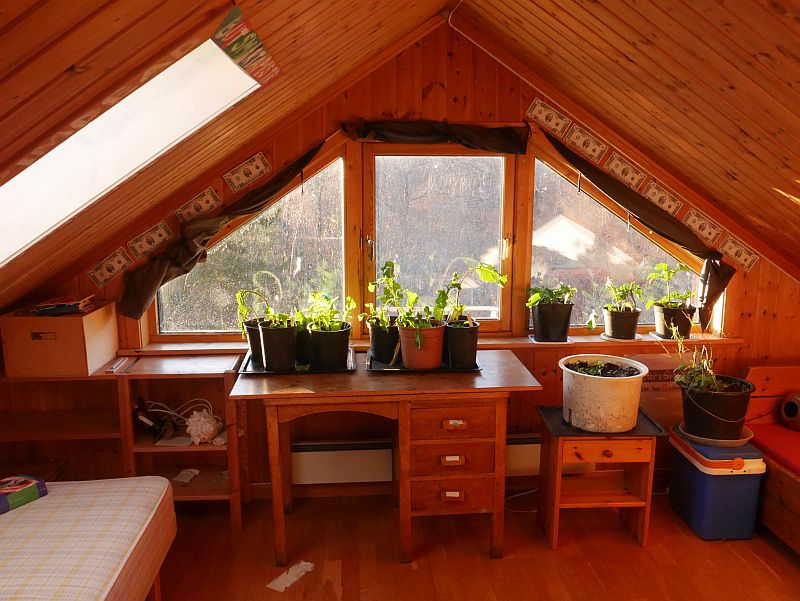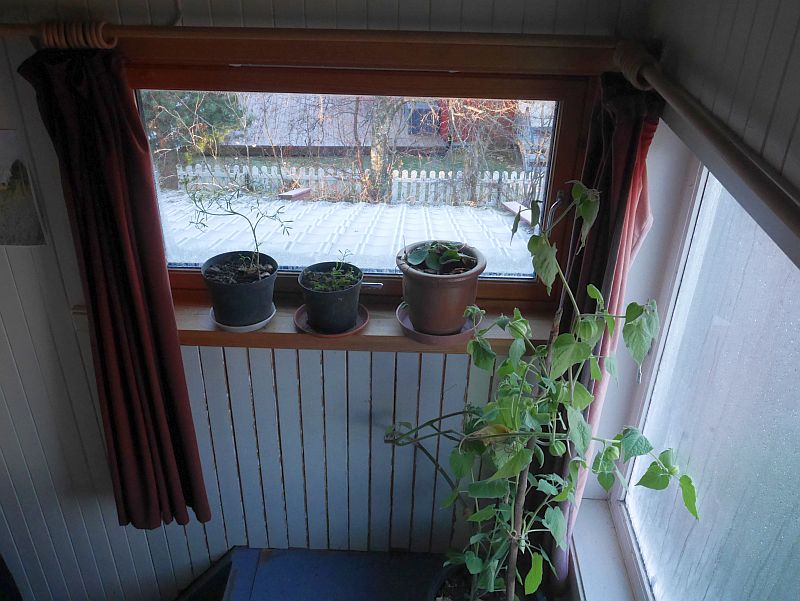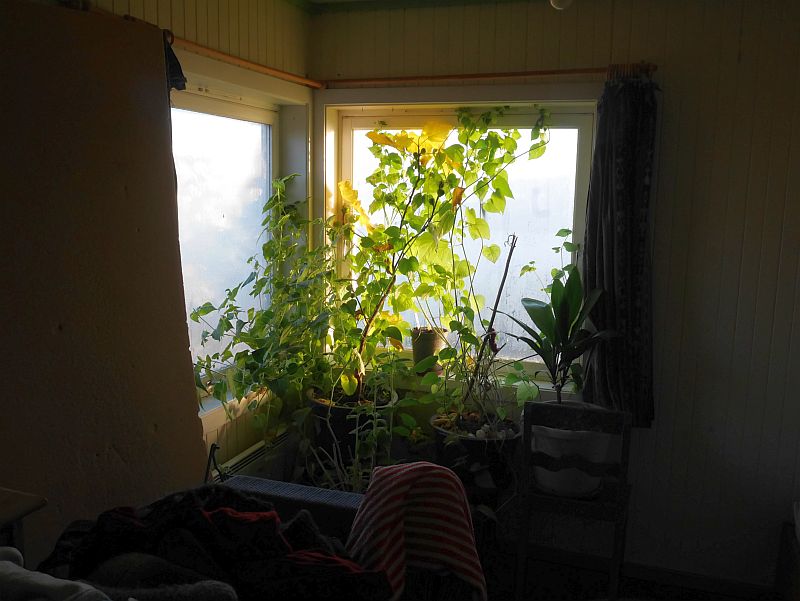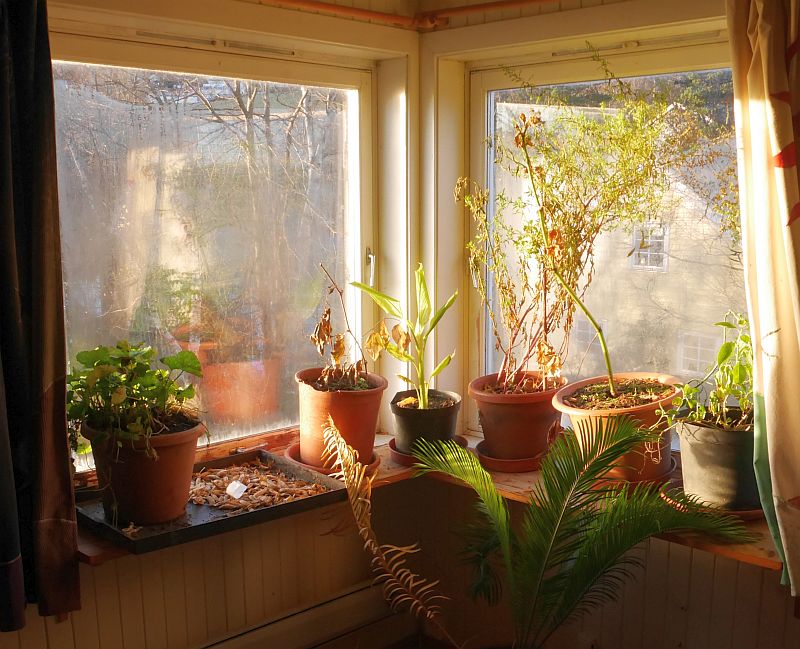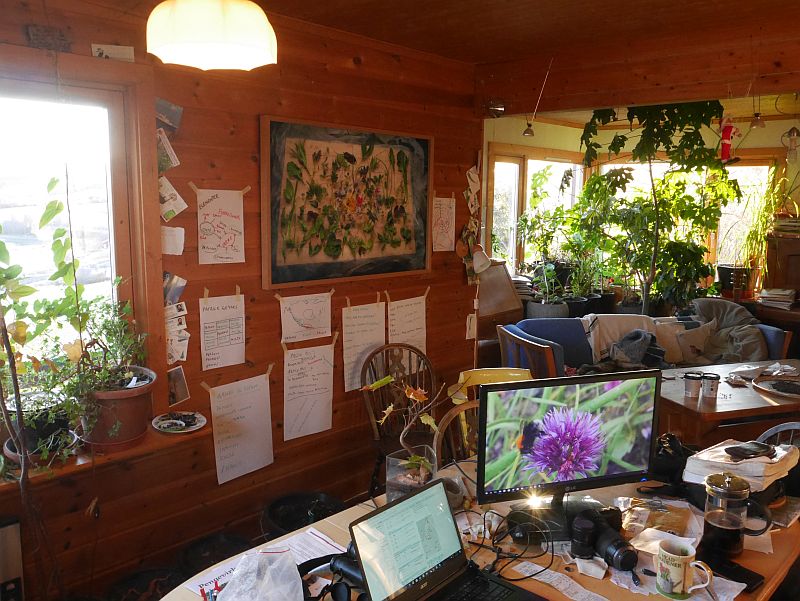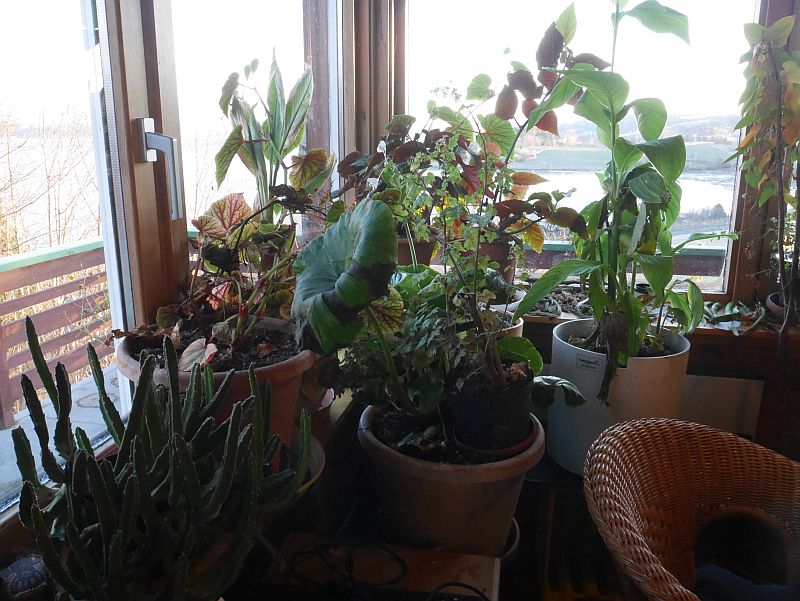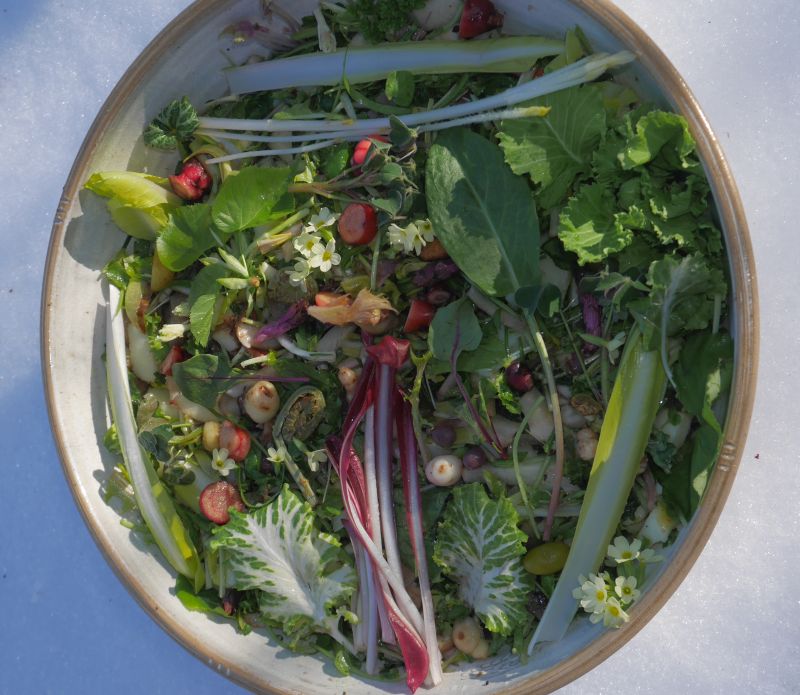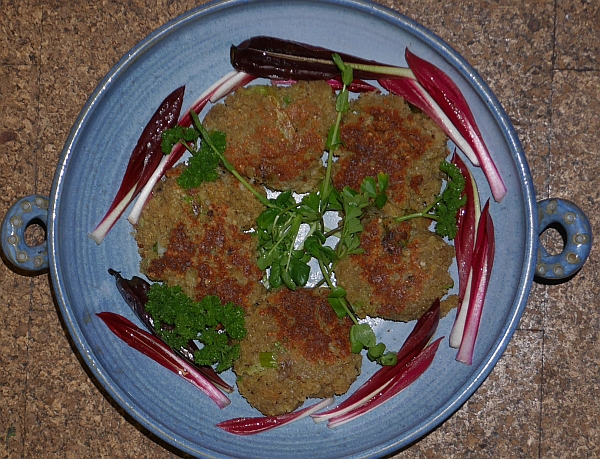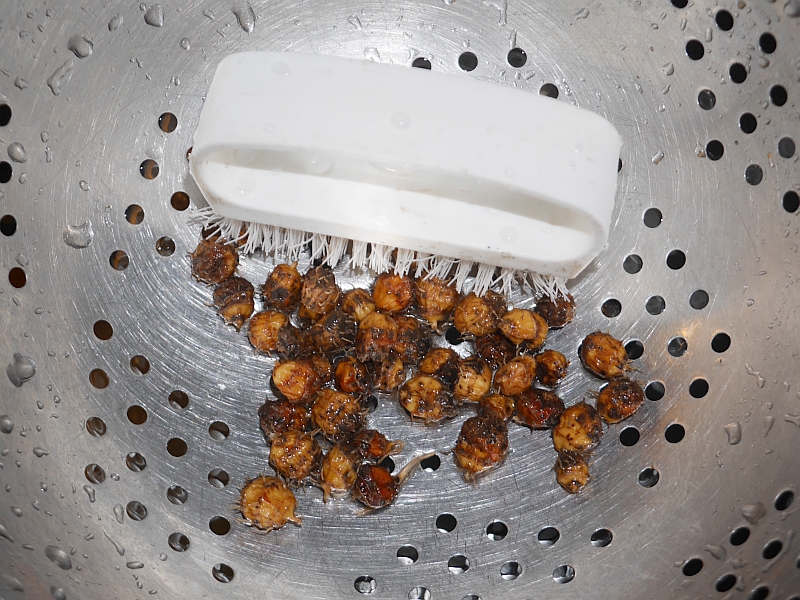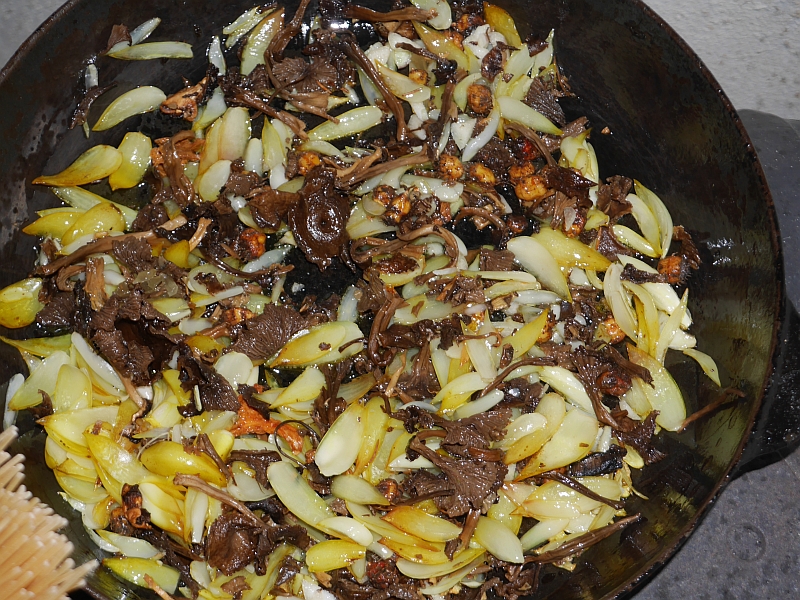I probably wasn’t aware, when we bought the house 40 years ago next year, how important the cold cellar under the house would be. It is largely unimproved since we moved here. It has allowed us to be self-sufficient in all our own fresh vegetables, root crops and fruit with minimal pre-processing. There are 4 full size rooms in the cellar which are kept dark (there are small windows which are kept covered) and without heating. Even though it is relatively early in the winter, it is at the moment just about as cold as it ever gets down there thanks to the freezing temperatures since the end of October. First are some pictures of the stairs and doors. Below is another album of pictures of the vegetables in storage; explanation with the pictures!
Category Archives: Cellar vegetables
Cellar and Garden Greens: 6th April 2022
The greens that went into last night’s wholegrain spelt quiche are listed below the picture!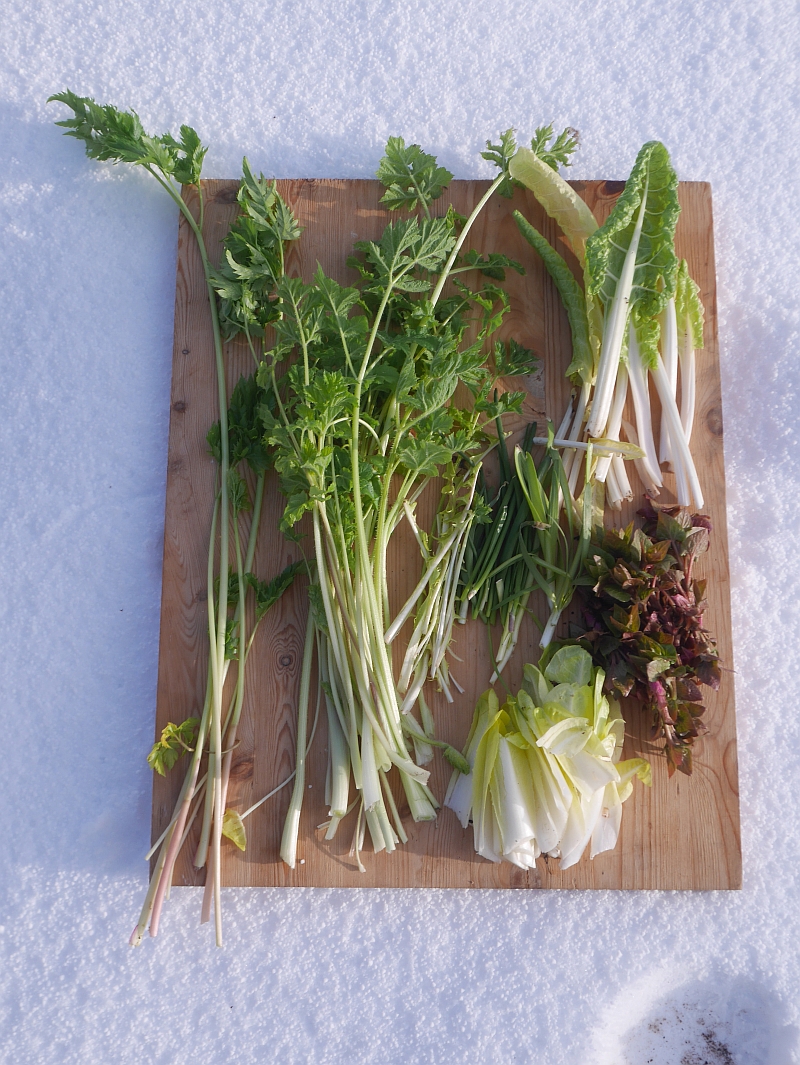 CELLAR: Dystaenia takesimana shoots; Forced hogweed (bjørnekjeks) shoots (Heracleum spp.); Forced Taraxacum (dandelion / løvetann); nederst til høyre: Witloof chicory (sikkori); øverst til høyre: swiss chard (mangold)
CELLAR: Dystaenia takesimana shoots; Forced hogweed (bjørnekjeks) shoots (Heracleum spp.); Forced Taraxacum (dandelion / løvetann); nederst til høyre: Witloof chicory (sikkori); øverst til høyre: swiss chard (mangold)
GARDEN: Various hybrid onions (Allium senescens x nutans) and Hablitzia tamnoides (Caucasian spinach / stjernemelde)
Japanese Sansai in March
Almost exactly 5 years ago this week I was on a study tour to Japan to look at Sansai production. I’m doing a webinar talk about the trip for Norwegian Seed Savers (KVANN) on 18th April. Although it’s open for all it will be in Norwegian. If there is interest for it I could repeat in English at some stage, but probably not before next winter. If anyone would like to organise it, please let me know. Otherwise, I may just organise it as the first Edimentals talk! See https://www.facebook.com/events/1333421547030675
Sansai (meaning mountain vegetables, mostly perennials) are what are essentially previously wild foraged vegetables which are now produced on farms in the lowlands around the cities in Japan, often in greenhouses for all year production – roots are often frozen until they are needed).
With a little planning one can extend the season for some of the best sansai vegetables by digging up roots in the autumn and planting them in soil in buckets which are stored in my cold cellar (just above 0C this winter), and ready to be brought up into the living room for forcing in winter / spring (they could also be left outside, protected by piling leaves or similar around them – the roots are more exposed to cold in a bucket). For blanching I use a second upturned bucket on top. I’ve now harvested three important sansai veggies which were forced (it took a couple of weeks);
Udo (Aralia cordata): peeled and sliced and eaten as a salad in a sesame oil and soy sauce with roasted sesame seed dressing
Ostrich Fern (Matteuccia struthiopteris): steamed for 10 minutes
Urui (Hosta sieboldiana): The blanched shoots are deliciously crispy and mild tasting, perfect with a dipping sauce (sesame oil, roasted sesame seeds and soy sauce)
The sansai were served with fried veggie beetroot burgers (aka blood burgers) which are cooked and grated beetroot mixed with egg and wholegrain emmer flour (with grated onion, garlic, chili, salt and pepper).
The winter’s first salad shoot salad
The salad was decorated with Begonia flowers from the living room!
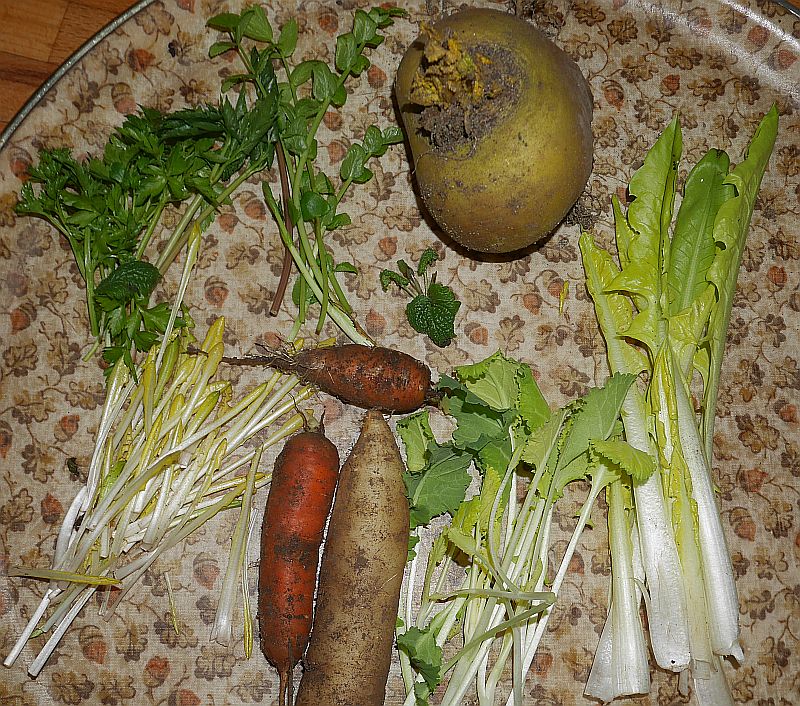

Falafels and cellar veggie wholegrain pizza!
Harvest (almost) complete
..and yes my good intentions to reduce the amount of plants I look after has failed miserably..
211117: Added pictures of other rooms in the house used to overwinter plants ![]()
Extreme winter record salad
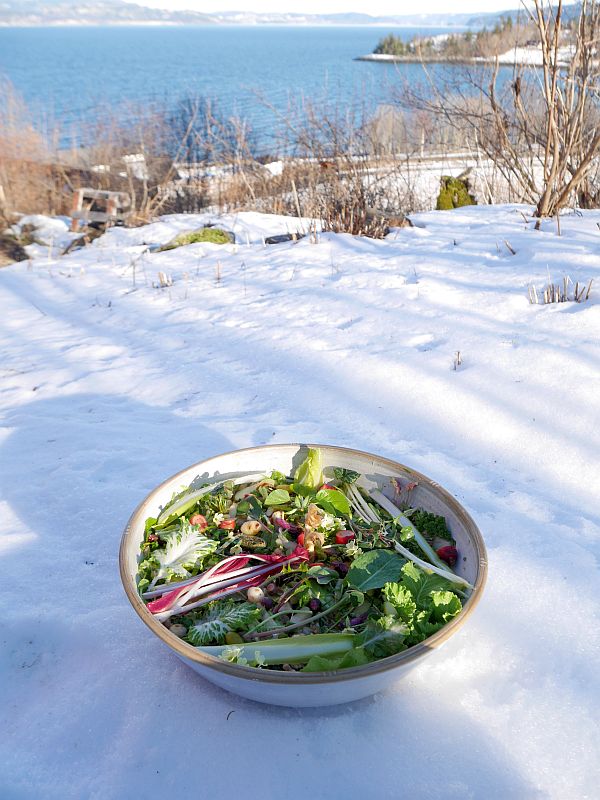
Proof one more time that north is best for growing a diversity of tasty salad greens ;) Presenting (and claiming) my new world winter salad diversity record, a salad with over 140 ingredients all harvested locally without using any additional energy than is available in my house and cellar (no greenhouse; no freezer; no fermenting involved and only dried fruit and seed used apart from fresh vegetables!). Despite the snow cover I was able to harvest some 20-30 edibles outside. More on how this can be done will be the subject of a separate post!
The salad was presented and eagerly devoured by those who had bought tickets for the Gourmet Cinema event on 9th March 2017 as part of the Trondheim Kosmorama Film Festival! It went so quickly, I didn’t even get a taste myself!
The film was followed by a Food talk with a panel including the film’s director Michael Schwarz, the head chef at Credo Heidi Bjerkan, myself and Carl Erik Nielsen Østlund, the owner of the biodynamic organic farm that supplies much of the food to Credo, moderated by Yoshi!
http://kosmorama.no/en/2016/12/gourmet-cinema-in-defense-of-food
As Michael Pollan concludes in the film:
Eat Food, Not too much and (as many as possible) mostly vegetables!
The day before, I had prepared a 105 ingredient salad for the festival dinner at Credo restaurant (http://www.edimentals.com/blog/?p=10184). While preparing that salad, I made a second salad with the same 105 ingredients…and then added almost 40 additional ingredients that I hadn’t had time to harvest the day before!
Tonight’s barlotto
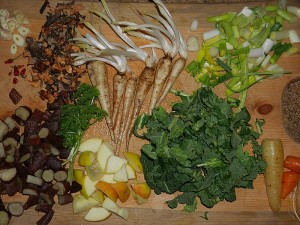
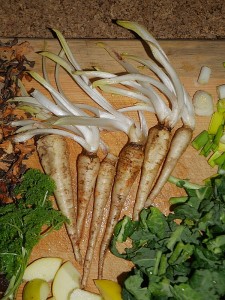
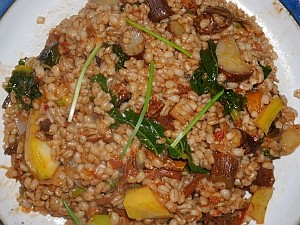
Home grown quinoa patties
Lily-chufa-parsley stir fry
Lily = bulbs of Lilium martagon (Martagon lily), an important forest garden source of carbohydrate, liking the shady conditions of deciduous woodlands
Chufa – the delicious tubers of the grass Cyperus esculentus

